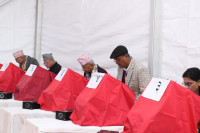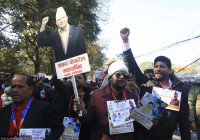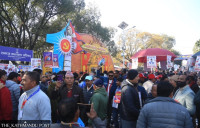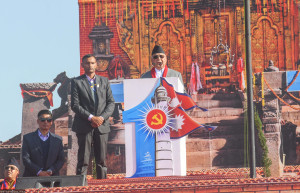Politics
Directly elected prime minister idea floated at UML convention
Observers warn against the idea saying that it will make the executive more autocratic.
Binod Ghimire
The debate for a directly elected executive head isn’t new in Nepali politics. It was the CPN (Maoist Centre) which raised the issue strongly even before the first Constituent Assembly elections in 2008.
The party lobbied for a presidential system of government and even projected its chairperson Pushpa Kamal Dahal as the country’s first president with executive authority before the Constituent Assembly elections. It continued to advocate for a presidential system of governance until the major political parties in June 2015 forged a 16-point agreement to continue with the existing system with a prime minister elected by parliament and a ceremonial president. The party, however, had registered a note of dissent against the provisions related to the form of government in the new constitution.
The Upendra Yadav-led Madhesi Janadhikar Forum also had contested the 2008 Constituent Assembly advocating a directly elected president and a fully proportional electoral system.
Before the promulgation of the 2015 constitution, the CPN-UML was in favour of a directly elected prime minister and ceremonial President. As the Nepali Congress strongly stood for the continuation of the parliamentary system where the prime minister is elected by parliament, the UML and the Maoist Centre abandoned their demands in the 16-point agreement. Hence, the Constitution of Nepal adopted the system with the prime minister being elected from parliament and the president being the ceremonial head of state.
Six years after the promulgation of the statute, the main opposition has started a debate for a directly elected prime minister. The representatives in the ongoing statute convention of the UML on Sunday recommended the party revive the agenda of a directly elected executive head. Though the convention didn’t adopt it as the party’s agenda item, the representatives from Province 2 and different sister wings of the party want the party to include a directly-elected prime ministerial system on the party’s agenda.
Jwala Sah, who summarised the suggestions from the representatives of Province 2, and Sunita Baral, who presented the recommendations from the sister wings, said it was necessary to go for a directly elected prime ministerial system for stability.
“We need a directly elected prime minister in the constitution. The party should carry the agenda,” said Baral, chair of the All Nepal National Free Students Union in the convention. The issue of a directly elected executive has been raised at a time when CPN-UML chair KP Sharma Oli was criticised for running the government autocratically during his three and a half years as prime minister.
Political analysts say Nepal should never go for directly elected executives saying that will harm democracy. They argue that Nepali prime ministers, who occasionally show autocratic tendencies by bypassing parliament, will become more autocratic if they are directly elected.
“I had long been an advocate of a directly elected executive head, mainly a presidential system. However, now I have started realising how wrong I was,” Lok Raj Baral, a former professor of Political Science at Tribhuvan University, told the Post. “We cannot stop a directly elected executive from taking a dictatorial path.”
Baral said that Nepal, like India, should work to strengthen the existing form of governance.
Baburam Bhattarai, chairperson of federal council of Janata Samajbadi Party who also is a former prime minister, is a strong lobbyist of the directly-elected executive head. He often writes on Twitter in favour of a directly elected presidential or prime ministerial system. Criticising the CPN-UML leaders and cadres who have been claiming that the current Sher Bahadur Deuba government was formed by the court and not by the popular mandate, Bhattarai on August 11 wrote on Twitter, “We are hearing Oli and his supporters ranting that court order trumped the popular mandate. In a system where the prime minister is elected by parliament, isn’t it natural to see the prime minister change with the change in parliamentary math? If not, let’s switch to a system of directly electing president or prime minister. But they don’t agree to this. How can you have the cake and eat it too?”
Political commentators say every form of governance has its strengths and weaknesses. However, going by the tendencies of the parties and the prime ministers, adoption of a directly elected presidential or prime ministerial system would open the doors to autocratic rule.
Geja Sharma Wagle, a columnist with Kantipur, the Posts sister paper, said the UML is trying to revive the issue that was rejected during the constitution making process. He said attempts to adopt a new form of governance will only invite instability.
“Parliamentary democracy is best suited to our country,” he told the Post. “Directly elected presidential or prime ministerial system will give rise to totalitarian tendencies.”
However, not everyone agrees. Shree Krishna Aniruddh Gautam, another columnist with Kantipur, said it is necessary to separate the legislative from the executive. He said the legislature should remain aloof from forming and toppling governments and instead focus on making laws.
“Our existing system hasn’t worked. We need a directly elected prime minister or president,” he told the Post. “The parliament with powers to impeach can keep the prime minister in check.”




 18.12°C Kathmandu
18.12°C Kathmandu














